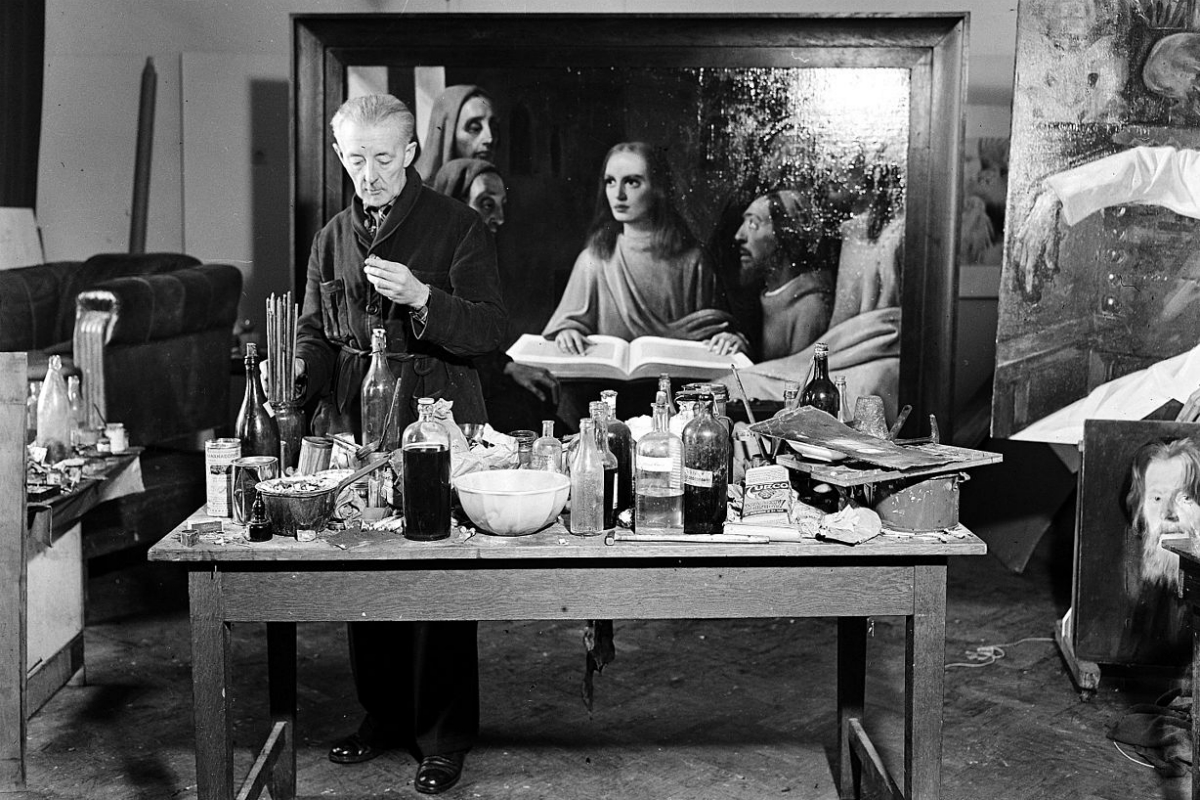The world's most famous fraudster painter: Who is Han van Meegeren?
Meegeren was a good painter and reached the height of his wealth by making and selling fake paintings until the end of World War II. It is known that one of the factors that pushed the artist to create fake paintings was that his paintings received heavy criticism.

Van Meegeren, who defended the techniques of classical period painters at a time when conceptual art was on the rise, would take his revenge in the following years. Han van Meegeren's fake paintings played an important role in the competition between museums during the war years, and the Boijmans Van Beuningen Museum in Rotterdam purchased the painting "Dinner at Emmaus" with Vermeer's signature on it, paying 520 thousand Gulden.
Meegeren studied Vermeer paintings for many years to show the art world that painting can be done even today with classical techniques. His aim was primarily to teach the art world a lesson, rather than making and selling fake paintings. Instead of making a fake of an existing painting, he decided to create a painting that did not exist in the name of that artist. He studied Vermeer's paintings for years.
Henricus Antonius "Han" van Meegeren (10 October 1889 – 30 December 1947) was a Dutch painter and portraitist, considered one of the most ingenious art forgers of the 20th century. Van Meegeren became a national hero after World War II when it was revealed that he had sold a forged painting to Reichsmarschall Hermann Göring during the Nazi occupation of the Netherlands.
He mastered all the details such as light, color, composition, mixing ratios of the paints he used, and the brushes he used. He took paintings from old times, scraped off the paint, and used the canvases for these works. To give his paintings an old look, he mixed liquid bakelite into the paints and baked them, thus ensuring that the paints passed the alcohol test and the cracks in the old paintings did not form. Even today's painting experts say that they are amazed by the technique invented by Van Megeren.
His paintings became so famous during his lifetime that today there are four of them in the Boijmans Van Beuningen collection. He painted not only Vermeer's paintings but also paintings with the names of famous painters of the Baroque period such as Caravaggio, Frans Hals, and De Hooch and sold them to museums and collectors as if they were newly discovered paintings.
Scratch to Göring
One of the most famous paintings he painted is "Jesus and the Adulterer" with Vermeer's signature underneath. He sold this painting to Hermann Göring, the famous marshal of Nazi Germany, who occupied the Netherlands in 1942, for 1.6 million Gulden, and with the money he earned, he became a member of the rich class by purchasing many properties in cities such as Amsterdam, Laren, and Deventer.
Painting experts of Göring, Adolf Hitler's loyal general, never realized that the paintings were fake. Until the war ended and the Nazis were arrested. Han van Meegeren, who was accused of selling a Vermeer painting to Göring and was taken into custody, was forced to reveal the truth when he realized that he would be executed during his trial for treason. With permission given to convince the court, he paints a new Vermeer painting in prison for two months. The headlines of the Dutch newspapers of that day read: "He paints for his living."
The court was eventually convinced, Van Meegeren was spared execution but received a one-year prison sentence for forgery. Two months after the court decision, he died of a heart attack before he could serve his sentence. During his trial at the Nuremberg courts, Göring was told that the painting he bought was fake. Realizing that he would be given the death penalty during the trial, Göring killed himself with cyanide in his cell. Both die before serving their sentences.
